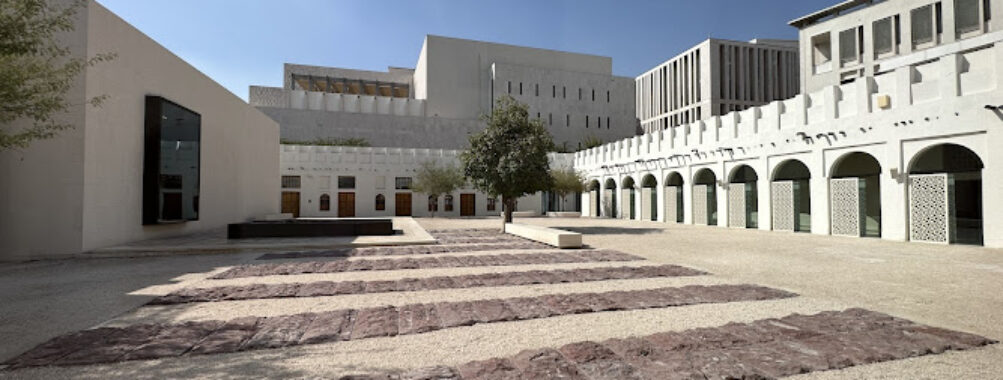
Bin Jelmood House – Msheireb Museums
Table of Contents
Description
Bin Jelmood House at Msheireb Museums is not your typical museum where you just stroll through dusty old artifacts. Nope, this place hits you right in the feels with its powerful and unflinching look at the history of slavery and human exploitation—past and present. It’s housed in what used to be the home of a slaver, so there’s this intense, almost haunting vibe that makes you stop and really think about the stories behind the walls. But it’s not just about the darkness of history; it also celebrates the resilience, strength, and important contributions of those who endured and overcame slavery. It’s a tribute to human perseverance, culture, and the social and economic impacts that formerly enslaved people have had on civilizations worldwide.
Walking through Bin Jelmood House, you’ll find yourself immersed in engaging audio-visual displays, including moving testimonials from descendants of slaves. It’s like hearing history whisper directly to you, making it impossible to stay indifferent. The museum doesn’t sugarcoat anything—it presents the brutal reality of slavery’s legacy and its modern-day echoes, urging visitors to reflect and even commit to fighting against ongoing human exploitation. If you’re someone who likes history with a side of raw truth and a call to action, this place will resonate deeply.
Accessibility-wise, the museum is thoughtfully designed. There’s a wheelchair accessible entrance, parking, and restrooms, so everyone can experience the stories and exhibits comfortably. Families with kids will find it engaging too, as the museum manages to educate without overwhelming younger visitors. Just a heads up, there’s no restaurant on-site, so plan accordingly if you’re visiting with a hungry crew.
Key Features
- Located in the former home of a slaver, offering a unique historical context
- Powerful audio-visual content including personal testimonials by descendants of slaves
- Focuses on the history of slavery and its evolution into modern human exploitation
- Highlights the social, cultural, and economic contributions of formerly enslaved people
- Interactive and reflective space encouraging personal commitment to human rights causes
- Wheelchair accessible entrance, parking, and restrooms for inclusive visiting
- Suitable for children, balancing education with sensitivity
- No on-site restaurant, so bring snacks or plan meals ahead
Best Time to Visit
Qatar’s heat can be unforgiving, especially in the summer months, so if you want to enjoy your visit without melting into a puddle, aim for the cooler months—think November through March. The museum’s indoor setting is climate-controlled, which is a relief, but the walk around Msheireb Downtown Doha can get a bit toasty otherwise. Weekdays, particularly mornings, tend to be quieter, offering a more intimate and reflective experience. If you’re like me and prefer to avoid crowds, steer clear of weekends or public holidays when the place buzzes with more visitors.
How to Get There
Getting to Bin Jelmood House is pretty straightforward if you’re already in Doha. It’s smack dab in the heart of Msheireb Downtown Doha, which is a well-planned, pedestrian-friendly district. If you’re coming from the airport or other parts of the city, taxis and ride-hailing apps like Uber or Careem are your best friends—quick, convenient, and affordable. Public transport options have improved, but they might not drop you right at the door, so be ready for a short walk. If you’re driving, there’s wheelchair accessible parking available, but parking spots can fill up, especially on busy days, so arriving early is a smart move.
Tips for Visiting
First off, give yourself enough time. The museum isn’t huge, but the content is dense and thought-provoking, so rushing through it would be a disservice. Take your time to absorb the stories, watch the testimonials, and reflect. You might find yourself wanting to sit and just think—that’s a good thing!
Don’t forget your camera or smartphone. While photography might be restricted in some areas, capturing the architecture and some of the public spaces can help you remember the visit. And trust me, you’ll want to share the experience with friends or family afterward—it’s that impactful.
If you’re visiting with kids, prepare them a bit beforehand. The museum handles the heavy themes sensitively, but it’s still a tough subject. Maybe chat about it in simple terms and encourage questions. It can be a meaningful learning moment for them, and honestly, for you too.
Lastly, wear comfortable shoes. The Msheireb area is a delight to explore on foot, and you might want to wander around the other heritage houses nearby after your visit. Oh, and carry a bottle of water—Qatar’s dry air can sneak up on you!
Location
Places to Stay Near Bin Jelmood House - Msheireb Museums
Find and Book a Tour
Explore More Travel Guides
No reviews found! Be the first to review!